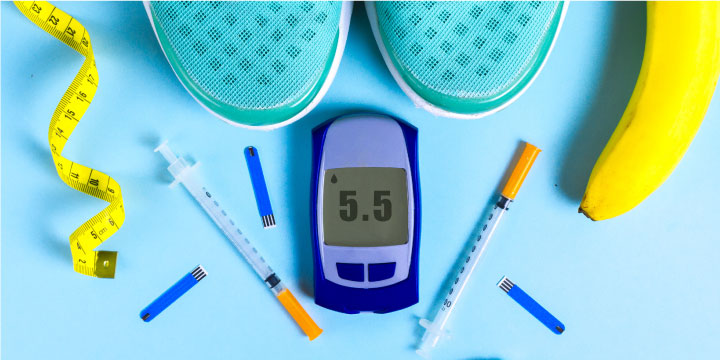5 Noteworthy Statistics About Diabetes and Your Vision
23-05-2024
Diabetes is a pervasive condition that affects millions of people worldwide, and its impact extends far beyond blood sugar levels. One of the critical areas affected by diabetes is vision. Understanding the relationship between diabetes and vision health can help raise awareness and encourage proactive eye care. Here are five compelling statistics about diabetes and your vision.
Diabetic Retinopathy is the Leading Cause of Blindness in Working-Age Adults
According to the Centers for Disease Control and Prevention (CDC), diabetic retinopathy is the leading cause of blindness among adults aged 20 to 74. This condition occurs in about one-third of people with diabetes over the age of 40 in the United States. Diabetic retinopathy damages the blood vessels in the retina, leading to vision impairment and blindness if not detected and treated early.Early Detection and Treatment Can Reduce the Risk of Severe Vision Loss by 95%
The United States National Eye Institute (NEI) reports that early detection and timely treatment of diabetic retinopathy can prevent severe vision loss in 95% of cases. Regular comprehensive eye exams are crucial for catching the early signs of diabetic retinopathy and other diabetes-related eye conditions, allowing for prompt intervention and preservation of vision.People with Diabetes are Twice as Likely to Develop Glaucoma
Research from the American Diabetes Association shows that individuals with diabetes are twice as likely to develop glaucoma compared to those without diabetes. Glaucoma is a group of eye conditions that damage the optic nerve, often due to increased pressure in the eye. Regular eye exams are essential for detecting glaucoma early and preventing significant vision loss.Cataracts are 60% More Common in People with Diabetes
The risk of developing cataracts is significantly higher in people with diabetes. According to the American Optometric Association, people with diabetes are 60% more likely to develop cataracts, and they tend to develop them at a younger age. Cataracts cause the lens of the eye to become cloudy, leading to blurry vision and, if untreated, eventual blindnesUp to 21% of People with Diabetes Experience Diabetic Macular Edema
Diabetic macular edema (DME) is a complication of diabetic retinopathy that affects the macula, the central part of the retina responsible for detailed vision. According to the National Eye Institute, up to 21% of people with diabetes may develop DME. This condition can cause significant vision loss and requires timely treatment to prevent further damage.Protecting Your Vision
These statistics highlight the importance of proactive eye care for individuals with diabetes. Here are some steps to help protect your vision:- Regular Eye Exams: Schedule comprehensive eye exams and diabetic eye exams at least once a year to detect any early signs of diabetic eye disease.
- Manage Blood Sugar Levels: Keeping your blood sugar levels within the target range can reduce the risk of developing diabetes-related eye conditions.
- Healthy Lifestyle: Maintain a balanced diet, exercise regularly, and avoid smoking to support overall eye health.
- Monitor Symptoms: Be vigilant about any changes in your vision, such as blurriness, floaters, or double vision, and seek medical attention promptly.
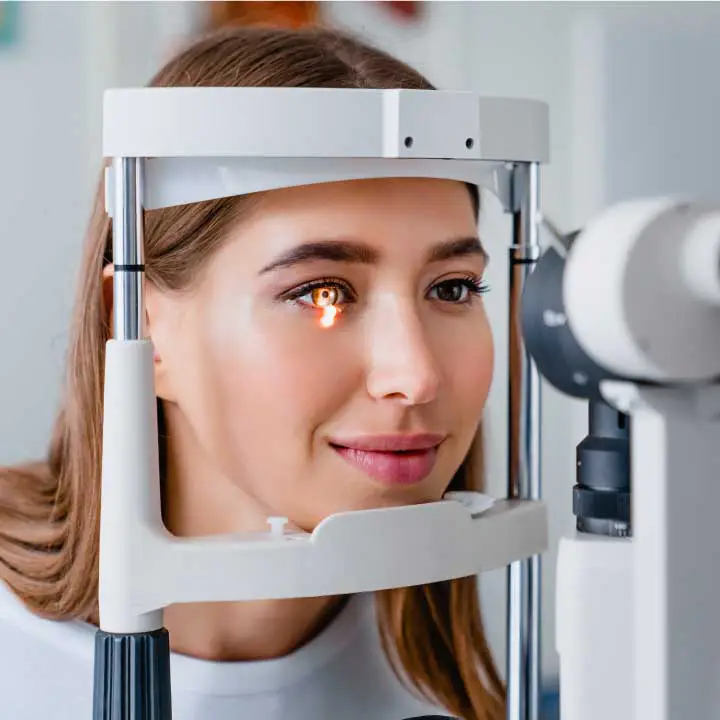
Adult Eye Exams
Our advanced eye exams consist of 25+ modern tests and digital scans to assess eye health, function, and visual acuity.

Child Eye Exams
Give your child a clear future with an annual eye exam from our experienced Edmonton optometrists.

Senior Eye Exams
Maintain your vision through your golden years with gold standard eye care from the optometrists at our Edmonton eye clinic.
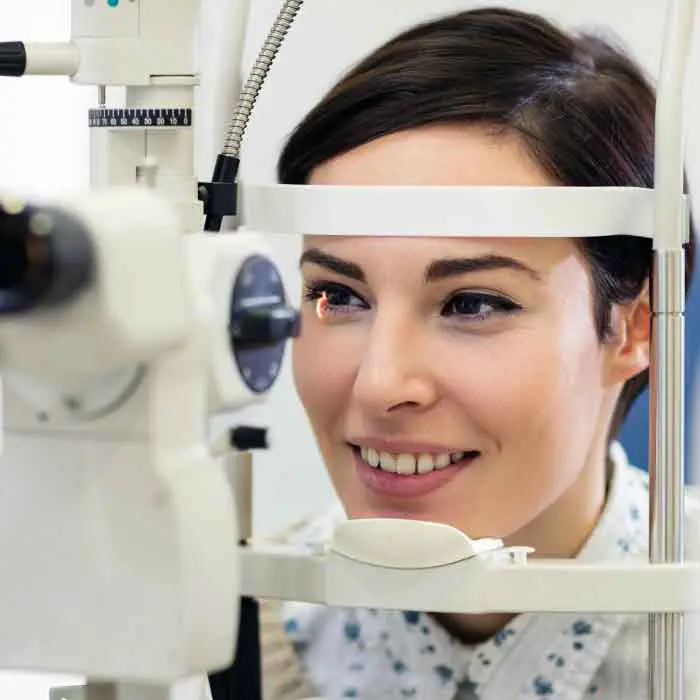
Contact Lens Eye Exams
Our eye exams for contact lens wearers include test and digital scans to assess eye health, function, visual acuity, and lens fit.
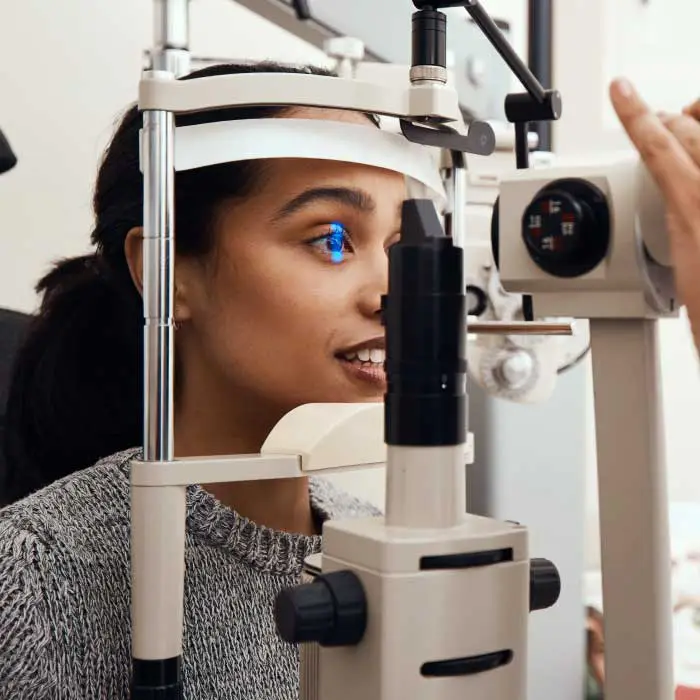
Diabetic Eye Exams
Managing diabetes requires regular eye exams to ensure that diabetes is not causing irreversible vision loss.
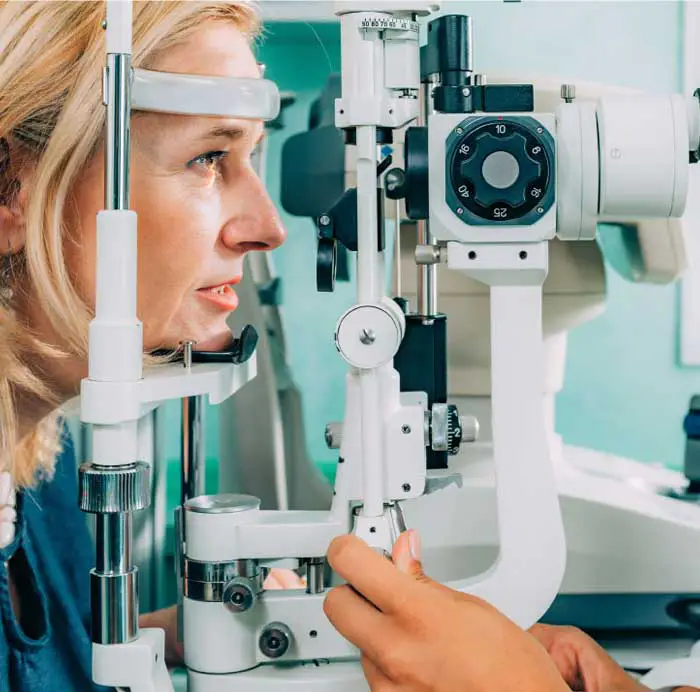
Dilated Eye Exams
Dilating the eyes enables our Edmonton optometrists to see more of the eye so that you many never see less.
Our Edmonton Eye Exams Are Comprised Of 4 Phases Of Evaluation

1. Eye Exam Pre-Testing
Corneal Thickness | Intraocular Pressures | Visual Field
Pre-testing is a detailed process that gathers all necessary information for the optometrist in advance of the optometrist-administered eye examination. This process involves completing a detailed patient history, as well as a series of standard tests. Pre-testing is an essential part of the comprehensive eye exam process, providing valuable information and visuals for both the optometrist and the patient.
More About Pre-Testing »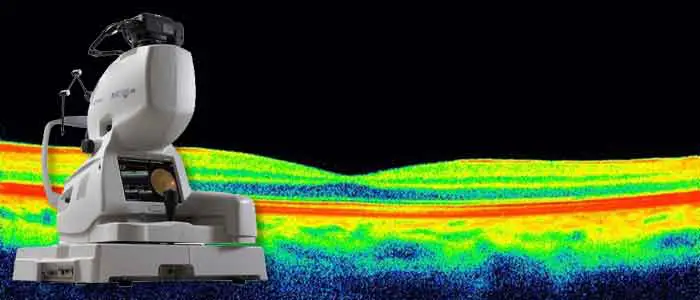
2. Advanced Diagnostic Testing
Retinal Photography, OCT, Topography
eye-deology Vision Care differentiates itself from other clinics by having the most advanced modern diagnostic specialty testing equipment. Specialty equipment, such as a wide-angle high-resolution retinal imager, Optical Coherence Tomography (OCT), Humphrey Visual Field Analyzer and corneal topographer, ensures that patients receive the best comprehensive eye care.
More About Advanced Testing »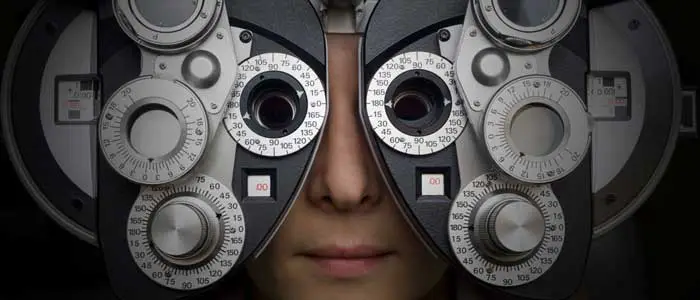
3. Optometrist Examination
Health Assessment & Disease Diagnosis
eye-deology Vision Care Edmonton optometrists perform a multitude of tests and assessments to evaluate ocular health, eye coordination, and visual acuity. In addition, they also evaluate the results of the tests and scans performed during pre-testing. As part of patient education, our optometrists also take the time to show and explain results to patients.
More About Doctor Exam »
4. Eye Glass Consult
Prescription | Lens Selection | Digital Fitting
If you require corrective lenses to improve your vision, our licensed opticians will customize their fit to your unique attributes, needs, lifestyle, and budget. Our opticians are happy to provide you with information about the latest eyeglass frame and lens technologies available so you can make informed decisions and begin seeing and looking your best.
More About Eyewear Consult »